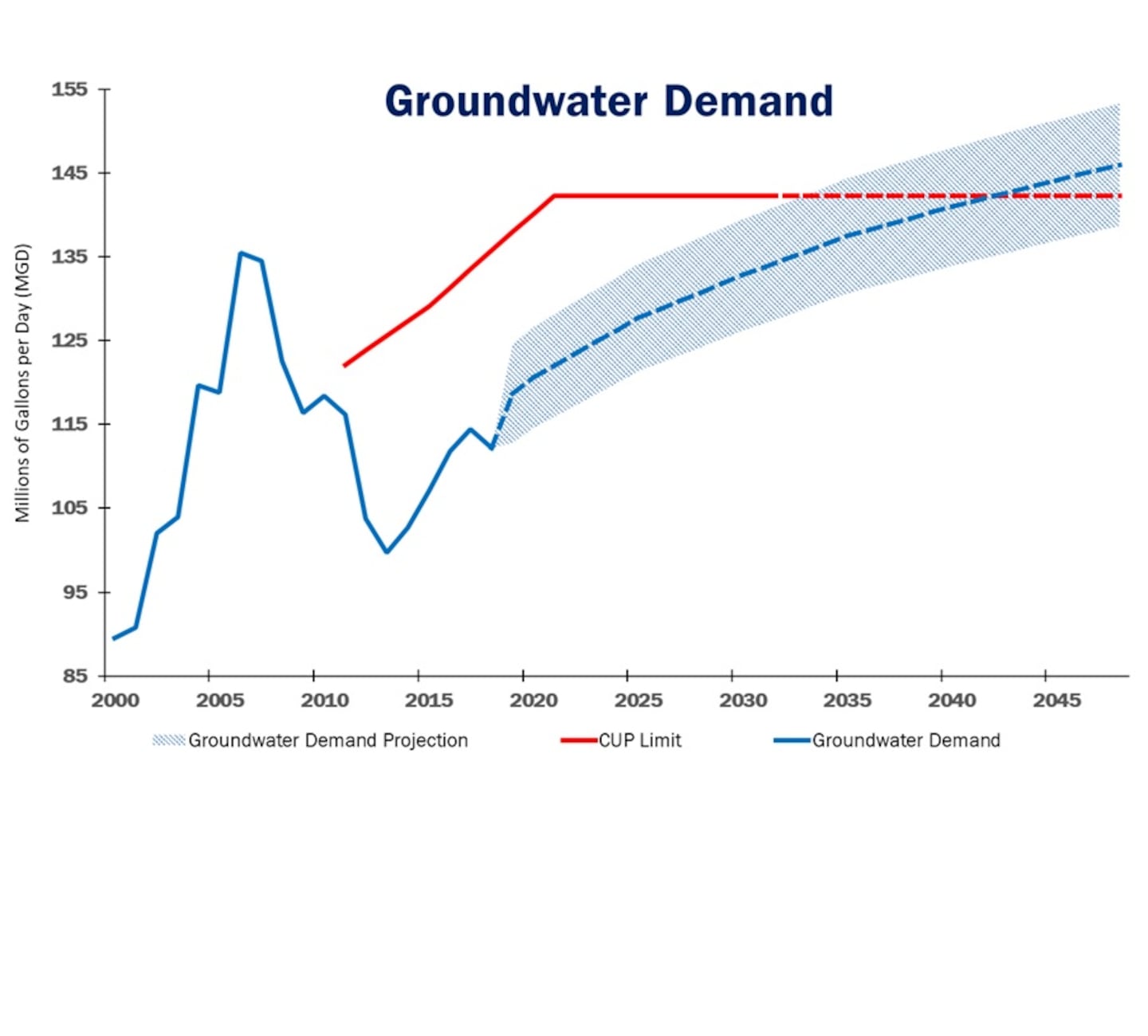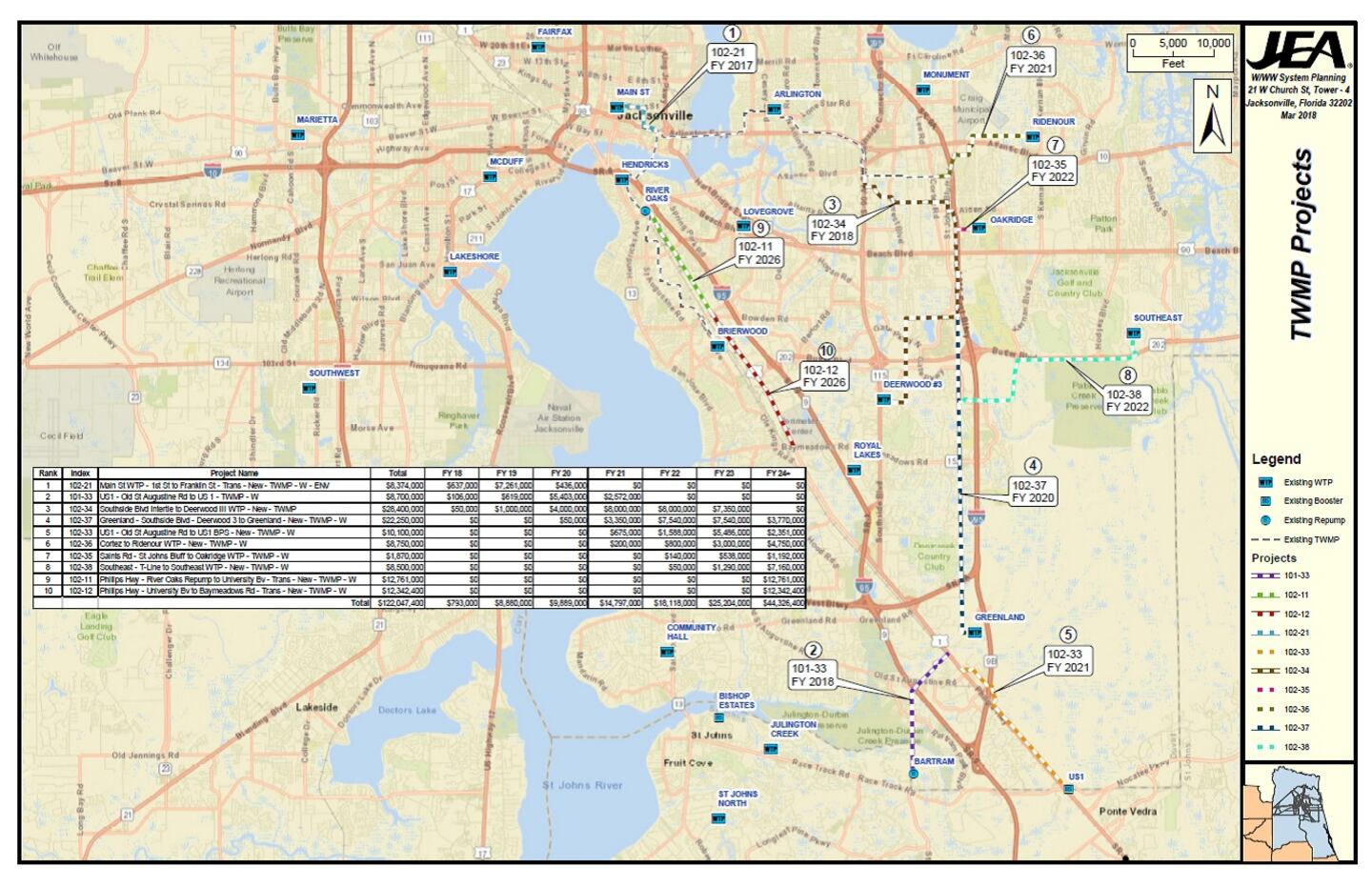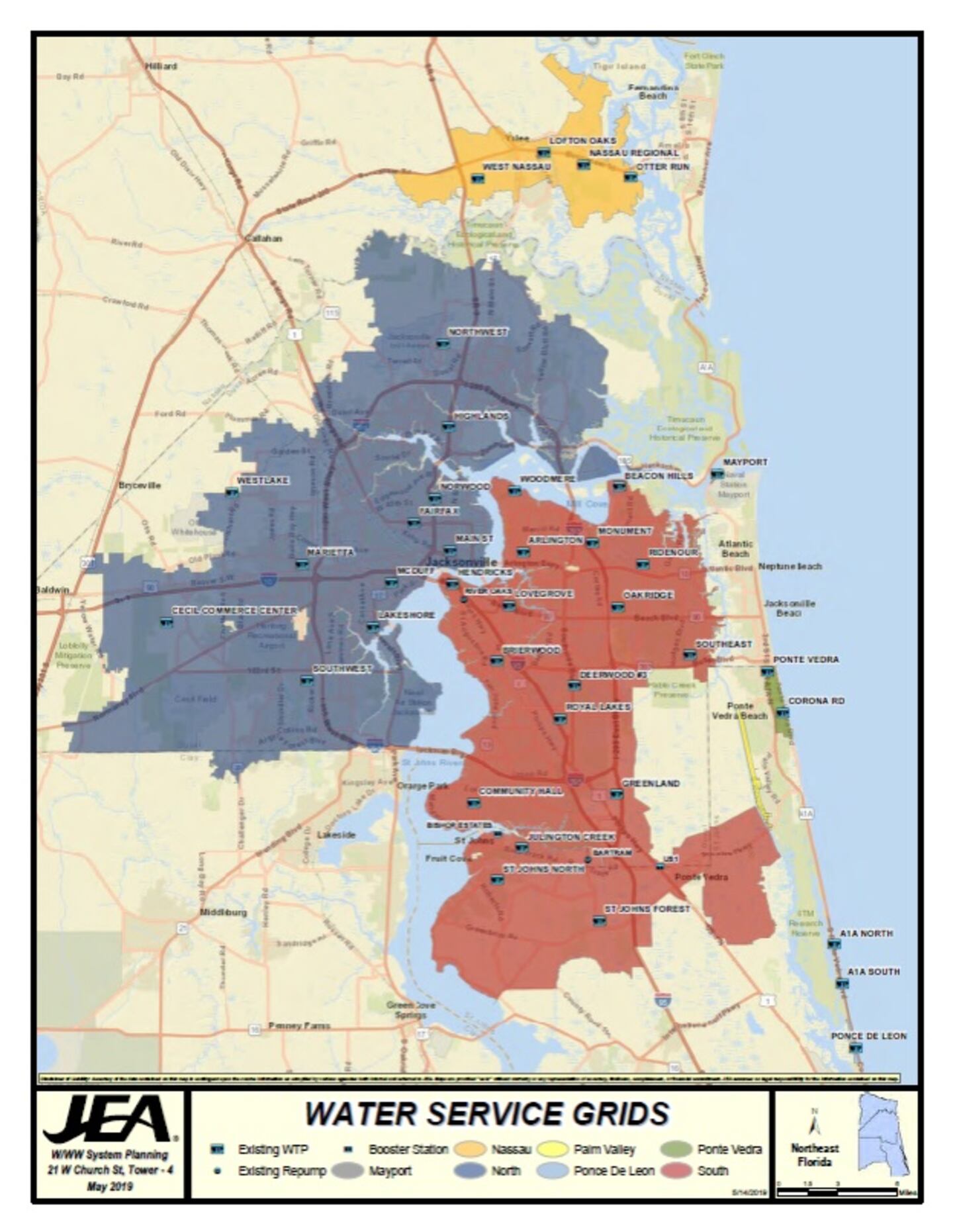JACKSONVILLE, Fla. — Northeast Florida is growing so fast, the biggest water supplier JEA is projecting that local demand will outpace groundwater supplies as early as 2035. So Action News Jax asked the question: will we run out of water?
RELATED: Action News Jax Investigates: Growth outpacing current water supply in Jacksonville-area
- JEA has produced an average of 113 MGD of potable water over the past 12 months and 17 MGD of reclaimed water for industrial and irrigation use for the same time period.
- Overall, JEA's residential customers use approximately 5,600 gallons per month.
|
County |
Use per home |
|
Duval |
5,300 |
|
St Johns |
7,200 |
|
Nassau |
7,700 |
|
Clay |
6,900 |
|
JEA Total |
5,600 |
- How many homes do you serve? County by county break down if you have it.
- How many homes was it in 2014? And what is projection for 2024?
|
County |
2014 |
2018 |
2024 |
|
Duval |
219,200 |
225,100 |
264,700 |
|
St Johns |
21,100 |
28,300 |
41,500 |
|
Nassau |
4,700 |
6,700 |
10,300 |
|
Clay |
3,100 |
3,800 |
5,200 |
|
Total |
248,100 |
263,900 |
321,700 |
- JEA does have enough permitted capacity to meet customer demands. JEA forecasts future growth through 2045+ for future resource planning. Alternatives to our current supply, the Floridan Aquifer, will be needed and JEA is actively working to evaluate multiple alternatives for where and when that additional supply is needed.
|
Grid |
FDEP Permitted Capacity, MGD‡ |
CUP Allocation, MGD† |
12 Month ADF |
12 Month MDF |
|
North Grid |
116.1 |
96.7 |
65.3 |
86.5 |
|
South Grid |
189.1 |
52.1 |
47.0 |
80.4 |
|
Nassau Grid |
8.9 |
4.2 |
3.4 |
6.3 |
|
Mayport Grid |
0.79 |
0.10 |
0.05 |
0.10 |
|
Ponte Vedra Grid |
3.06 |
1.36 |
1.06 |
1.67 |
|
Ponce de Leon Grid |
1.05 |
0.52 |
0.43 |
0.68 |
|
OVERALL SUMMARY |
319 |
155 |
117 |
176 |
|
†The Consumptive Use Permit allocation is an annual limit regulating the amount of water that can be withdrawn out of any wellfield (Water Treatment Plant) which is tracked using the Average Daily Flow (ADF) for the grid/WTP. |
||||
|
‡The Florida Department of Environmental Protection issues a permit for each WTP to document what each plant is capable of producing which is tracked using the Maximum Daily Flow (MDF). |
||||
- JEA has been actively planning for, and preparing designs for, additional transmission mains and water treatment plants to ensure that water is delivered to it's customers. The planned large transmission mains shown will work with capacity improvements (new WTP, storage and pumping) to better position JEA to meet future growth.
- JEA has 38 WTPs throughout the service territory to produce water for local demands and a couple of booster stations to assist with delivery of this water. There are currently 17 WTPs in the South Grid (JEA's connected water service area south and east of the St Johns River), with 3 in the St Johns County and an additional one, currently in design, to be constructed in the RiverTown area. Improvements are underway at the US-1 Storage and Repump facility to add storage and pumping capacity.
- No. The South Grid is capable of producing up to 52 MGD for any given year for the local demand. The Main Street WTP can provide up to 32 MGD (currently 20 MGD) to assist the South Grid with meeting demands through large transmission mains (30" and 36") under the river. Those river crossings were completed with two different projects; the first was completed in the early 2000s ('03-'04) and the latter in 2010s ('12-'14).
- Water pressure is impacted during the daily peaks and more so during drought periods; this drop in pressure does impact the water available at fire hydrants. In order for JEA to maintain the ability to meet emergency demands pressures in the system are reduced to reserve some water in the reservoirs for the distinct purpose of fire protection; they are designed and permitted that way with/through the FDEP.
- JEA monitors and regulates pressures in the system at each WTP/Booster Pump station using a combination of controls (pump sizes, drives, etc..). The facilities are sized to account for additional demands in emergency situations. This past May was the hottest over the past century and provided a stress test to the system that necessitated some actions to ensure that we maintained the ability to meet an emergency condition, had it presented itself. JEA is in the process of analyzing the available data (flows and pressures) to determine how the system responded and use the information to better prepare for future peak demands through infrastructure or operational improvements.
Cox Media Group








